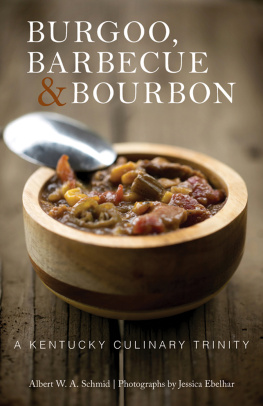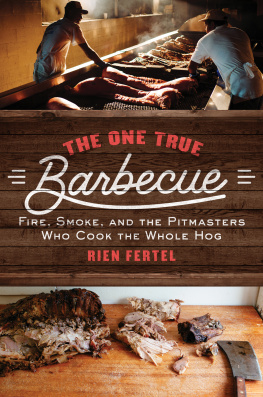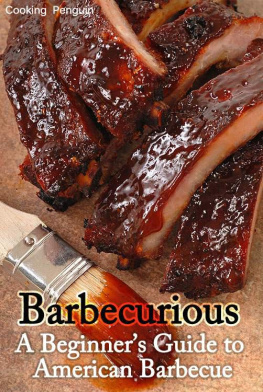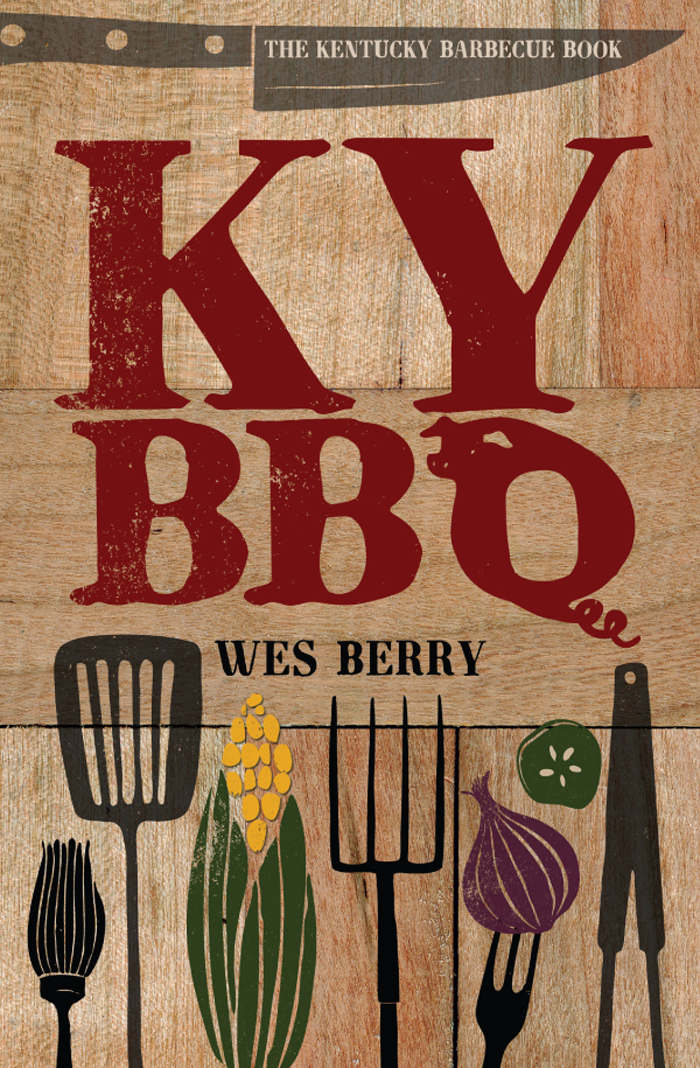The Kentucky Barbecue Book


The Kentucky Barbecue Book
Wes Berry

Copyright 2013 by The University Press of Kentucky
Scholarly publisher for the Commonwealth,
serving Bellarmine University, Berea College, Centre
College of Kentucky, Eastern Kentucky University,
The Filson Historical Society, Georgetown College,
Kentucky Historical Society, Kentucky State University,
Morehead State University, Murray State University,
Northern Kentucky University, Transylvania University,
University of Kentucky, University of Louisville,
and Western Kentucky University.
All rights reserved.
Editorial and Sales Offices : The University Press of Kentucky
663 South Limestone Street, Lexington, Kentucky 40508-4008
www.kentuckypress.com
17 16 15 14 13 5 4 3 2 1
Map by Dick Gilbreath, University of Kentucky Cartography Lab
Library of Congress Cataloging-in-Publication Data
Berry, Wes, 1969
The kentucky barbecue book / Wes Berry.
pages cm
Includes bibliographical references and index.
ISBN 978-0-8131-4179-4 (hardcover : alk. paper)
ISBN 978-0-8131-4180-0 (epub) (print)
ISBN 978-0-8131-4181-7 (pdf) (print)
1. Barbecuing. I. Title.
TX840.B3B47 2013
641.76--dc23
2012045882
This book is printed on acid-free paper meeting the requirements of the American National Standard for Permanence in Paper for Printed Library Materials.

Manufactured in the United States of America.
 Member of the Association of American University Presses
Member of the Association of American University Presses
To
Elisa Berry, adopted Kentuckian and Jewish pig farmerso proud to make country ham and bacon with you.
The memory of my uncle Roy Eason Williams, who colored my childhood with exaggerated belches, bawdy humor, and smoky treats from his cinderblock pit.
My barbecue companions, past and present. Love and peace to you all.

In memoriam: Ford Ranger, 19912012. Ill miss your company on my barbecue odysseys, mostly dependable rattletrap.
Contents
How to Chew the Fat
Bluegrass Barbecue Lingo
Baby back ribs: Small meaty ribs cut from the blade and center section of a hogs loin, called baby because they come from smaller (and usually younger) hogs. Larger loin back ribs are often called baby backs on restaurant menus.
Backwoods smoker: A manufactured cooking unit that makes use of water pans above the fire pit to add moisture to the cooking chamber.
Barbecue potato: A baked potato loaded with tasty fatty stuff like sour cream and butter and topped with barbecued meat and sauce.
Bark: The darkened exterior of smoked meats, favored by lovers of smoke and big flavors. Because of greater exposure to heat, bark is drier than the interior meat.
Beef brisket: A cut from the foreshank (breast or lower chest) of a beef cow, notoriously tough until tenderized by low and slow cooking. The flat cut is leaner than the point or deckle. The tastiest cut is the full brisket, which has plenty of fat layered in.
Burgoo: An everything but the kitchen sink rich stew made with several meats and vegetables, cooked up in large quantities at Owensboros International Bar-B-Q Festival and found at barbecue joints in Kentucky, especially those in the Burgoo Belt (my term) that includes the counties of Daviess, Hopkins, and Christian, among others.
Chip or chipped: A style of barbecue preparaation popular in Union County and Henderson County, where heavily smoked exterior pieces of pork shoulders, hams, and mutton quarters are chopped and mixed with a thin, tangy dip sauce, a bold flavor creation thats salty and good as a sandwich.
City ham: Hams partially cured in sweet brine before being lightly smoked and cooked. Many western Kentucky barbecue joints smoke city hams and precooked turkey breasts to imbue them with a deeper smoked flavor.
Fast Eddys by Cookshack: A meat-smoking apparaatus that often utilizes wood pellets and a gas flame.
Hardwood: In tree talk, the wood from broad-leafed trees like oak, hickory, maple, and sassafras rather than conifers (like pine and cedar).
Hickory: One of the hardest of the hardwoods, hickory trees are nut-bearing friends of squirrels and Kentucky pit masters, who favor the smoke and heat imparted by hickory over all other woods. Several different species of hickory trees live in North America, including shagbark, shellbark, mockernut, bitternut, and pignut. Some pit masters claim they prefer one species of hickory like shagbarkto others.
Masonry pits: Barbecue pits built out of cinderblocks (concrete blocks) and mortar, stacked a few blocks high and covered with flame-proof material like roofing metal. Meats cook on wire grates inside the pits. Once the blocks get hot, they hold heat well. Besides the oldest barbecuing methods, like digging a hole in the earth, masonry pits are the most traditional barbecue pits in Kentucky, favored by many pit masters in the western part of the state.
Monroe County dip: Sopping sauce favored in several south-central Kentucky counties, made with vinegar, butter, lard, salt, black and cayenne pepper, and sometimes other ingredients like tomato or mustard, used for basting meats as they cook slowly over hickory coals. Also served as a finishing sauce.
Monroe County style: Thin slices of pork shoulder grilled over hickory coals and sopped with the Monroe County dip. Shoulder is by far the best-selling meat, but joints cooking in the Monroe County style also serve grilled whole and half chickens, pork ribs, pork tenderloins, hamburgers, and hot dogs.
Mutton: Mature sheep, either female or castrated males. Mutton is Kentuckys claim to barbecue fame, although only 10 percent of the barbecue places in the state serve it.
Mutton dip: A Worcestershire sauce-based sop used to baste mutton during many hours of slow cooking, also used as a dipping sauce for cooked mutton.
Naked: Refers to pure meat served without the application of sauces or cooking tricks. For example, Id call a whole pork shoulder seasoned with salt and smoked on a pit until tender, then served without sauce naked. Or Id call a beef brisket cooked without wrapping it in foil and served without sauce a naked brisket. If you start dressing it up too much, its no longer naked, of course!
Ole Hickory Pit: A meat smoker made in Cape Girardeau, Missouri. A popular model utilizes a gas flame that burns sticks of wood to create heat and smoke in a firebox adjacent to the cooking chamber.














 Member of the Association of American University Presses
Member of the Association of American University Presses